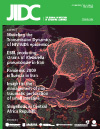Serological pattern of anti-HBc alone infers occult hepatitis B virus infection in high-risk individuals in Iran
DOI:
https://doi.org/10.3855/jidc.728Keywords:
hepatitis B core antibody (anti-HBc) alone, occult hepatitis B virus (HBV) infectionAbstract
Introduction: Anti-hepatitis B core antibody (Anti-HBc) alone is defined as the presence of anti-HBc in the absence of HBsAg and anti-HBs. The significance of this serological pattern as a predicting factor for occult hepatitis B virus (HBV) infection remains largely unknown. This study aimed to assess the significance of anti-HBc alone in predicting occult HBV infection in high-risk and low-risk individuals.
Methodology: A total of 926 individuals were enrolled in this study, including 289 hemodialysis (HD) and 106 HIV-infected patients who were considered as a high-risk group and 531 blood donors who were considered as low-risk. HBsAg, anti-HBs, anti-HBc were tested in all subjects. The presence of HBV-DNA was determined quantitatively in patients with anti-HBc alone by real-time PCR.
Results: Of the 395 high-risk patients, 40 cases (10.13%) had anti-HBc alone, while 11 subjects (2.07%) out of 531 blood donors had anti-HBc alone. HBV-DNA was detected in 12 out of 40 (30%) high-risk patients and none of the blood donors with anti-HBc alone.
Conclusion: Our study showed that the serological pattern of anti-HBc alone could reflect occult HBV infection in high risk cases but did not presume occult HBV infection in low-risk individuals.
Downloads
Published
How to Cite
Issue
Section
License
Authors who publish with this journal agree to the following terms:
- Authors retain copyright and grant the journal right of first publication with the work simultaneously licensed under a Creative Commons Attribution License that allows others to share the work with an acknowledgement of the work's authorship and initial publication in this journal.
- Authors are able to enter into separate, additional contractual arrangements for the non-exclusive distribution of the journal's published version of the work (e.g., post it to an institutional repository or publish it in a book), with an acknowledgement of its initial publication in this journal.
- Authors are permitted and encouraged to post their work online (e.g., in institutional repositories or on their website) prior to and during the submission process, as it can lead to productive exchanges, as well as earlier and greater citation of published work (See The Effect of Open Access).








